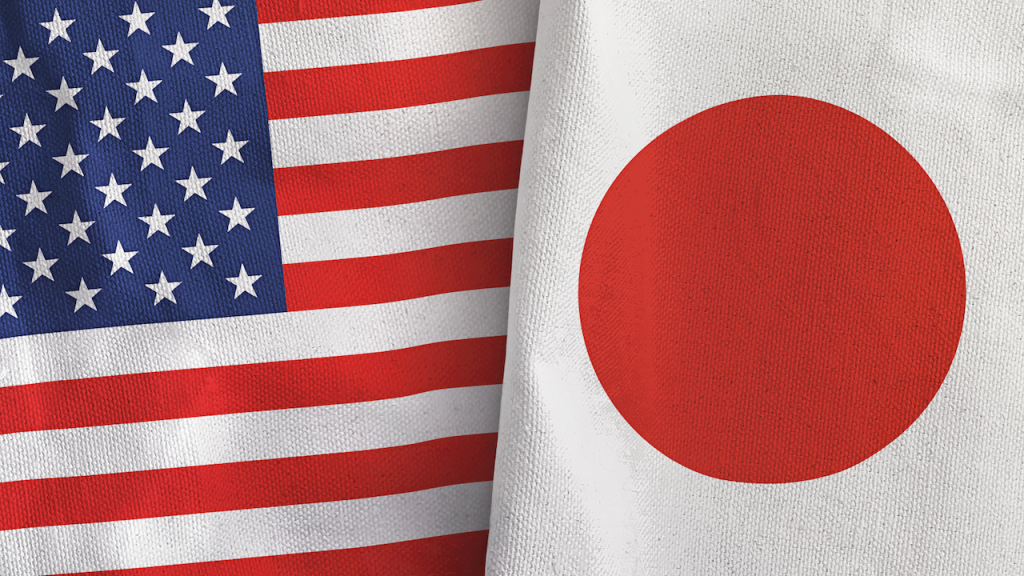
When Prime Minister Shigeru Ishiba affirmed Japan’s commitment to a “balanced and fair” trade agreement with the United States last week, he wasn’t just signaling goodwill. He was acknowledging a deeper reality: the U.S.–Japan relationship—among the world’s most consequential—requires an economic framework equal to its strategic weight.
The deal announced this week—a 15% reciprocal tariff agreement that averted previously planned 25–27.5% levies on Japanese goods and autos—delivered relief for markets and avoided immediate escalation. Stocks rose and inflation fears subsided. Yet as both allies take stock, it’s clear that tariff agreements alone do not constitute a strategic foundation.
Turning Momentum Into Strategy
U.S. exports to Japan support nearly 475,000 American jobs, whileJapanese investment since 2003 has created more than 275,000 more—a number that will undoubtedly grow with Japan’s pledged $550 billion in new U.S. investment. Japan also hosts the only forward-deployed U.S. aircraft carrier, anchoring Indo-Pacific security for over half a century.
Yet even amid deep economic and security integration, trust in the U.S.–Japan relationship has frayed. A recent Yomiuri poll found that only 22% of Japanese citizens express confidence in the U.S., while 68% report some degree of distrust. Among Japanese policymakers, the U.S. is increasingly seen not as a consistent anchor of stability, but as a partner prone to abrupt shifts—making it harder to build lasting economic frameworks. That’s precisely why this moment matters: both nations have an opportunity—and an imperative—to move beyond tariff adjustments and narrow gains, and to lay the foundation for a resilient, future-oriented alliance.
What a Visionary U.S.–Japan Trade Agreement Requires
1. Digital Governance
Authoritarian regimes are asserting “digital sovereignty” to controldata flows and extract strategic advantage. The U.S. and Japan must respond with a principled alternative: enabling secure, rules-based data flows among trusted partners, grounded in privacy protections, democratic oversight, and cybersecurity. Together, the two nations can set high-standard, interoperable rules for artificial intelligence—defining the digital ecosystem for democratic societies.
2. Supply Chain Resilience
The pandemic, natural disasters, and geopolitical shocks have revealed the fragility of global production. A joint U.S.–Japan effort should prioritize diversification in semiconductors, rare earths, pharmaceuticals, and clean energy components. That effort should be structured through operational mechanisms featuring early-warning systems, joint inventories, and real-time crisis protocols. It also requires leading a coordinated effort to ensure maritime securityand that ports remain open during periods of geopolitical stress.
3. Security Integration
A true economic alliance must align both inbound and outboundinvestment screening to prevent capital and expertise from aiding strategic rivals. Coordinated export controls and shared vetting practices will help safeguard sensitive technologies and reinforce mutual trust.
This should extend to strengthening the defense industrial base—including shipbuilding, undersea systems, and maritime logistics—where both nations face capacity constraints and rising demand. Joint planning, co-production arrangements, and supply chain security measures in these sectors will be critical to sustaining deterrence in the Indo-Pacific.
4. Infrastructure Finance
The U.S. and Japan are well-positioned to provide high-standard, transparent infrastructure as an alternative to China’s Belt and RoadInitiative. Joint projects in digital, energy, and transportation can strengthen supply chain diversification and regional connectivity—while projecting democratic economic leadership across the Indo-Pacific.
5. Clean Energy Cooperation
Both nations share concerns over China’s dominance in green energy supply chains. A forward-looking agreement should support joint carbon accounting standards, hydrogen and ammonia deployment, and transparency across green infrastructure. These steps will accelerate decarbonization while enhancing strategic resilience.
6. Institutionalized Coordination
To endure, the deal must be backed by a standing U.S.–Japan Strategic Economic Dialogue—a platform for long-term planning, dispute resolution, and aligned execution. Such a mechanism can also provide guardrails against abrupt, unilateral decisions that could undermine strategic confidence.
7. Regional Signaling
This agreement must be understood not in isolation, but as part of a broader strategy to counter China’s economic influence, including through the Regional Comprehensive Economic Partnership (RCEP). With U.S. reentry into the Comprehensive and Progressive Agreement for Trans-Pacific Partnership (CPTPP) or adding a trade pillar to the Indo-Pacific Economic Framework (IPEF) both unlikely, a high-standard bilateral pact with Japan can set the pace and tone for regional engagement.
From Relief to Resilience
This agreement delivered welcome momentum. It averted tariff escalation and injected confidence into the global economy. But momentum must now become strategy. The real test is whether Washington and Tokyo can use this moment to institutionalize a shared economic architecture that reflects their strategic alignment, mutual trust, and global responsibility.
Japan is not just a trade partner. It is a co-architect of the rules-based international order. A U.S.–Japan agreement that reflects this role—anchored in shared values, supply chain resilience, and digital leadership—will do more than raise GDP. It will help secure the future of democratic economic leadership in a contested world.
Author
Mark Kennedy
Director & Senior Fellow
